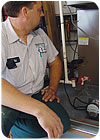
Most manufacturers recommend that heat pump systems are charged in the cooling mode only. Use the proper refrigerant charge verification techniques as recommended by the manufacturer, such as the superheat-subcooling method.
This article outlines a 10-step process used during retrofits that will help you attain those goals.
1.Perform a full heat/loss gain analysis on the structure. Renovations and/or additions to the building may have affected its heat loss/gain since the existing equipment was installed. This is also a good idea because the original equipment installer may not have performed a proper heat loss/gain calculation at all.
2.Become familiar with the sequence of operation of the new heat pump. Is the reversing valve energized in the heating or cooling mode? This may be different from the heat pump that’s being replaced. It’s of the utmost importance to understand the sequence of operation of the equipment being installed or serviced.
3.Plan the backup heat strategy. Make sure that you have determined the proper balance point and set up the control system accordingly. A heat pump that never operates in heat pump mode cannot meet the customer’s efficiency expectations.
4.Make sure there is enough low-voltage control and line voltage wiring. Today’s heat pumps may require 12 or more low-voltage conductors for all of their advanced functionality and communications devices. Ensure that the chosen conductors can handle the current draw of installed electric heater kit(s).
5.Replace the line set with a properly sized line set for the application. The line set from an R-22 system will contain mineral oil. This is not compatible with the POE (polyolester) oil used in R-410A systems. If the line set absolutely cannot be replaced due to wall concealment or other reasons, use a commercially available flush kit to remove as much of the mineral oil as possible.
6.Replace the indoor coil with a new matching coil. Connecting the old indoor coil to the new outdoor unit presents two major problems: possible significant capacity loss and residual mineral oil in the coil from the R-22 system, which will cause problems with the POE oil in the R-410A system. Remember, it’s in the customer’s best interest, for both efficiency and equipment longevity, to replace the coil in a retrofit application.
Line sets should be brazed with a minimum of 5 percent silver content alloy. Soft solder is not acceptable for R-410A installations.
Additionally, if the line set will exceed a preset distance, the accumulator size may need to be increased to handle the additional system refrigerant. During brazing, a nitrogen bleed should be used to prevent oxidation and scaling of the internal copper surfaces. After the connections are made, the nitrogen may then be used to pressure test the field joints for leaks.
7.Proper evacuation of the line set and indoor coil is critical - for all heat pump and a/c installations. You must achieve a vacuum of 500 microns or below. The POE oil utilized in R-410A systems is extremely hygroscopic (has a great affinity for water). Mixing moisture and POE is a recipe for disaster, including, but not limited to, metering device restriction and compressor failure. Proper evacuation ensures that this moisture is removed. Systems with R-410A refrigerant (and POE oil) should never be left open to the atmosphere.

Got airflow? Cooling mode requires 400 cfm/ton of airflow. On systems with PSC blower motors, measure the total system external static pressure (ESP) and use the manufacturer’s blower performance charts to determine airflow delivery at a given blower speed.
Air handlers and furnaces with ECM motors usually have a jumper setting for cfm selection; 400 cfm per ton is also used with ECM model furnaces and air handlers.
9.Properly charge the system’s refrigerant per the manufacturer’s recommendations. Most manufacturers recommend that heat pump systems are charged in the cooling mode only. Use the proper refrigerant charge verification techniques as recommended by the manufacturer, such as the superheat or subcooling method.
10.Teach the customer about proper heat pump operation and maintenance. Techno-speak is not required, but a retrofit application would be a great time to discuss details, such as the sound made by the reversing valve when the system switches over to defrost mode. The owner should also be instructed to keep the coil surface free of debris and other obstructions. This is also a good opportunity to establish a regular maintenance schedule.
Taking a little extra time up front to properly set up and install a heat pump system will pay large dividends. The customer will enjoy a comfortable home, appreciating the equipment investment they have made. The installing contractor will enjoy many positive referrals and minimized callbacks.
Publication date:05/28/2007

Report Abusive Comment